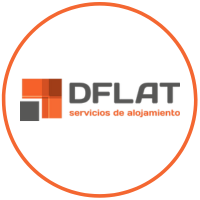Value Added Tax (VAT) is an indirect tax levied on the final consumption of goods and services, the cost of which is passed on to the final consumer. Taxpayers (businesses and professionals) collect VAT and pay it to the tax authorities.
Landlords are considered to be entrepreneurs or professionals for VAT purposes if they carry out this activity on a regular or organised basis.
Therefore, if you have a rented property, it is important that you know how, when and where to file your VAT declaration in order to correctly fulfil your tax obligations.
Who must declare VAT on rental property?
In general, all owners of rental properties are obliged to declare the VAT generated by the rentals, regardless of whether they are individuals or legal entities such as limited liability companies, cooperatives, etc.
However, there are some particularities and exceptions:
- Individuals or private landlords in contracts for the permanent rental of housing: they do not have to declare VAT, as this is considered to be a VAT-exempt rental of housing.
- Individuals or private landlords in the case of temporary corportate rental for the accommodation of employees.
- Individuals or private landlords renting a second home: they must declare VAT on a quarterly basis if the annual rental income exceeds the legal limits.
- Owners’ associations: do not have to declare VAT if they rent out common elements such as a garage.
- Property developers: must account for VAT on rentals from new developments that have not yet been sold.
- Individual entrepreneurs who rent out apartments that form part of their business assets.
The obligation arises from the moment the rental activity begins. Even if the property has been empty for several months, VAT must be declared if it is available for rent.
Therefore, if you are the owner of one or more rental properties, you must submit regular VAT self-assessments to declare the income received.
When and how to declare VAT on a rental?
VAT declarations for property rental must be submitted quarterly: from the 1st to the 20th of April (for the first quarter of the year, January to March), from the 1st to the 20th of July (for the second quarter of the year, April to June), from the 1st to the 30th of October (for the third quarter of the year, July to September) and from the 1st to the 30th of January (for the fourth quarter of the year, October to December).
In the case of the first tax declaration, the deadline is extended to the last day of the month following the corresponding tax period.
Of an annual tax declaration, the deadline is from 1 to 30 January of the following year.
It can be submitted in the following ways:
- In person, at any branch or office of the Tax Agency. It is necessary to make an appointment in advance and to present the signed paper form.
- By post, by sending the form to the Tax Agency branch corresponding to your tax address. It is important to send it in time so that it is received before the deadline.
- By Internet, via the electronic centre of the Tax Agency, using an electronic certificate, a Cl@ve PIN or a reference number. This is the easiest and quickest option, with several advantages:
– Convenience: Tax declarations can be filed from anywhere with an internet connection, without the need to travel or queue.
– Speed: The process is quicker as the data is transmitted directly without paperwork.
– Reliability: Errors are minimised as there is no need to manually transcribe the data.
– Monitoring: The status of the declaration can be checked at any time.
– Savings: Cost savings as there is no need for travel or consultancy.
– Sustainability: As a digital process, the use of paper is reduced.
– Up-to-date: Online forms are always up to date with the latest requirements.
Special attention should be paid to non-working days (weekends and holidays) to avoid missing the deadline for filing. It is best to consult the Agencia Tributaria’s calendar.
Filing your tax declaration on time will help you avoid unnecessary surcharges and ensure that your tax obligations as a landlord are properly met.
Information to be included in the declaration
When submitting a VAT declaration for a rented property, it is necessary to provide the following information:
- Personal details: name and surname or company name, VAT number and tax address. It is important that these details are exactly the same as those used at the Hacienda or tax office to avoid rejection of the declaration.
- Tax period: the period for which the declaration is being filed must be indicated; year, quarter (for quarterly returns) or month (for monthly returns).
It is essential to indicate the correct tax period. - Operations carried out: in this section you must specify all the operations subject to VAT carried out in relation to the rented property during the tax period.
These operations can be: income from rents received, deductible expenses (community, supplies, etc.), purchases of goods and services related to the property and any other operation that affects VAT taxation. All transactions involving VAT must be clearly identified with the corresponding amounts.
VAT calculation
This is the most important part of the declaration. It calculates the difference between the VAT accrued and the input VAT to determine the amount to be paid or refunded.
The VAT accrued is the VAT charged to tenants on the rent. It is calculated by applying the tax rate to the taxable amount, which is the amount of the rent excluding VAT.
Input VAT is the VAT paid by the landlord or owner on purchases and expenses related to the rented property (e.g. acquisition of the asset, repairs or renovation, maintenance, supplies, etc.). It is deducted from the VAT incurred.
The difference between the two will determine whether a payment is due to the tax authorities (if the accrued VAT is greater than the input VAT) or, on the contrary, a refund is due (if the input VAT is greater than the accrued VAT). It is important to keep all invoices and information relating to the expenses of the property in order to justify the input VAT. Quarterly accounting allows you to balance months with positive and negative results.
A common mistake is not to include all deductible expenses or to apply the tax rate incorrectly. If you are in any doubt, it is advisable to seek professional advice.
At DFLAT we know that declaring VAT on rentals can be complex. That is why we offer personalised advice to landlords who wish to rent a property in Madrid, through our property website DFLAT Madrid with total security.
Conclusion
The VAT declaration of a rented property is a process that can be complex, but that every landlord who rents out a house must carry out. It is important to be aware of the timetable for filing the declaration, to know that it can be done online, and to include all the necessary personal details and the period to be declared.
Most important part is the calculation of the difference between the accrued VAT and the input VAT. This determines the amount to be paid or refunded. Applicable deductions can reduce the amount of tax due.
In order to avoid mistakes, it is best to be well informed, to keep a close eye on your income and expenses, and to consult a professional when in doubt. A correct VAT declaration will avoid future problems with the tax authorities.
DFLAT provides accommodation for high-end executives, expatriates and masters students
We market our properties through B2C, B2B, moving companies, relocation, travel and our own channels. For example, we offer and rent corporate apartments.
Contact us if you are a property owner looking for rental management assistance in Madrid through our web site www.dflatpropietarios.com


